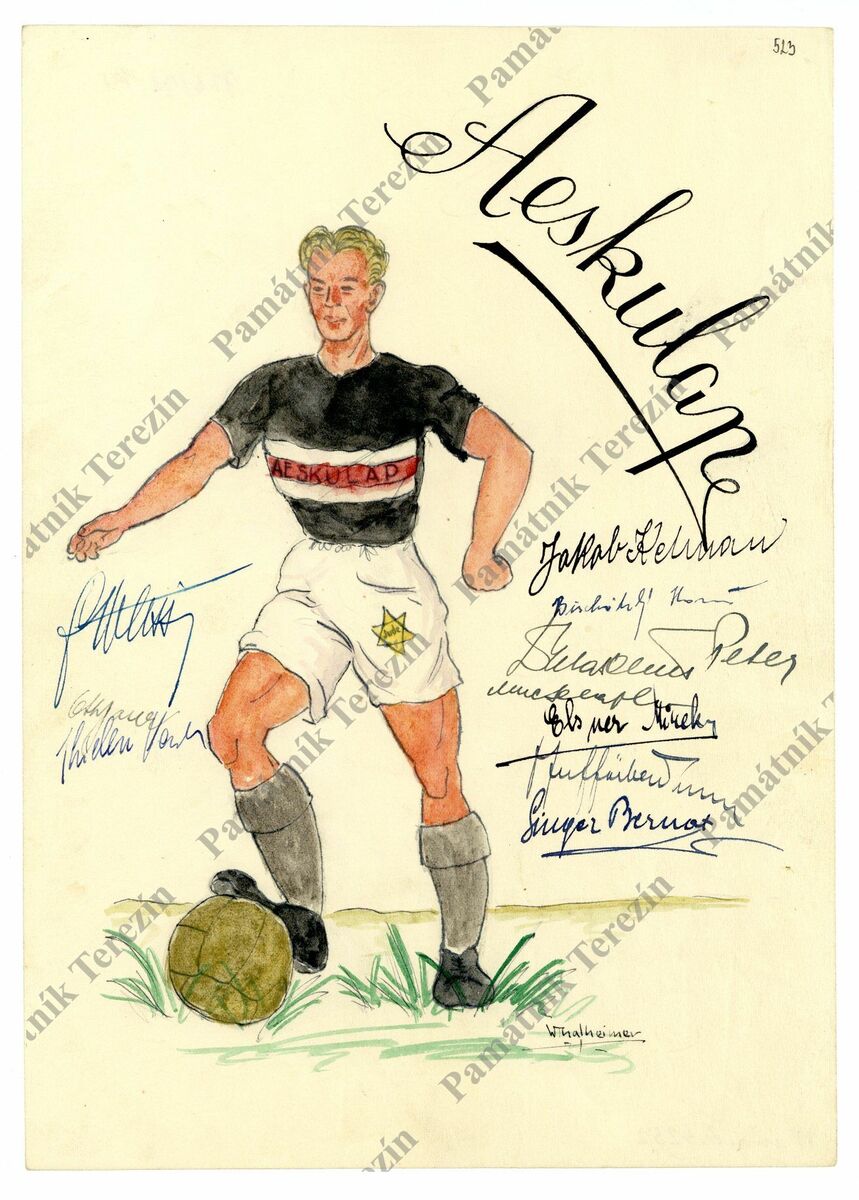Source

Source: Souvenir poster from Theresienstadt for team Aeskulap, signed by prisoners. Original watercolor by W. Thalheimer, 1943-44. Courtesy of the Terezín Memorial.
Theresienstadt was a concentration camp located in German-occupied Czechoslovakia in the city of Terezin. The camp was originally designed to house 7,000 inmates but after the German Reich began the deportation of its own Jews in 1941, the camp’s population swelled to 58,000. The “model camp” was also frequently used for propaganda purposes by the regime to deceive the international community about the conditions in the camp system. Some wealthy or well-known Jews were imprisoned there, and the camp’s vibrant cultural life was featured in publications as evidence that those in captivity were well treated. The reality was that disease, malnourishment, and mistreatment by guards were common. Tens of thousands died on site and even more lived there before deportation to other camps where they were murdered.
Despite these conditions, Theresienstadt prisoners attempted to maintain their dignity, hope, and health by pursuing cultural and leisure pursuits. The Liga Terezin, a soccer league, began in 1942 and ran until 1944. This image is that of a souvenir poster from the Terezin league. Signed by all the players, this poster belonged to the team Aeskulap (Aesculapius), the Roman god of medicine and healing. The teams were often divided up by people’s professions and nationalities. This team most likely was made up of former doctors. Matches were often held on Sundays and became quite popular for the inmates.
Theresienstadt was not the only camp to host a soccer league. Soccer was played in Auschwitz as well. One former inmate, the Polish writer Tadeusz Borowski (1922–1951), wrote, “Between two throw-ins in a soccer game, right behind my back, three thousand people had been put to death.”

Source: Souvenir poster from Theresienstadt for team Aeskulap, signed by prisoners. Original watercolor by W. Thalheimer, 1943-44. Courtesy of the Terezín Memorial.
Pamatnik Terezin